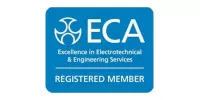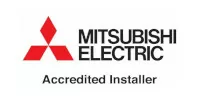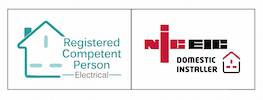Solar Battery Storage Installation
A solar battery is similar to any kind of battery but stores energy. Energy storage or battery energy storage systems (BESS), refers to the technology of storing electrical energy in batteries for later use. These systems store electricity generated from renewable sources, such as solar panels or wind turbines, or during times of low electricity demand when prices are lower, and then release it when needed.
How Battery Storage Typically Works
-
Charging
-
Electricity is generated from renewable sources or obtained from the grid during off-peak hours when electricity prices are lower. This electricity is then used to charge the batteries.
-
Energy Storage
-
Discharging
Battery Storage Systems Offer Several Benefits
Energy Independence
They allow homes, businesses, and even entire communities to store excess energy generated from renewable sources and use it when needed, reducing reliance on the grid.
Peak Hours
By storing electricity during times of low demand and discharging it during peak demand periods, battery storage systems can help reduce peak demand charges and overall electricity costs.
Backup Power
In the event of a grid outage, battery storage systems can provide backup power, ensuring continuity of operations for critical loads.
Integration of Renewables
Battery storage helps smooth out the intermittent nature of renewable energy sources like solar and wind by storing excess energy for use when these sources are not producing electricity.
Battery storage systems come in various sizes, from small-scale residential units to utility-scale systems used by power plants or large commercial facilities. The technology continues to advance, with improvements in battery efficiency, lifespan, and cost, making it an increasingly attractive option for individuals, businesses, and utilities looking to integrate renewable energy sources, reduce energy costs, and enhance grid reliability.

Who Makes Solar Batteries?
There are a number of manufacturers on the market today offering quality products, including Tesla, Enphase, Powervault, LG & Sonnen.
At BSE|Home, we continually review the market to ensure we provide you with the best possible battery storage systems for your requirements.
Which Solar Battery is the Best?
The optimal solar battery system varies from project to project, based on the specific features you prioritise. BSE|Home carefully evaluates all crucial factors before selecting the solar battery that meets your specific requirements.
Battery Capacity – KWH
Battery size, also referred to as Capacity, represents the maximum energy in kilowatt-hours that a battery can hold at any given moment.
Certain solar batteries are scalable, allowing for gradual additions to energy storage and the expansion of battery capacity over time. Solar batteries are available in various capacities, with larger capacities generally associated with higher costs. In the UK, the average household consumes approximately 8-10 kWh of electricity daily. However, the storage capacity required for your project is dictated by your specific energy consumption.
Since a solar battery should never be fully discharged, “usable capacity” indicates the true amount of energy a battery can store.
Charge/Discharge Rate
A battery’s charge rate denotes the rate at which it charges or discharges in Amps. This rate is calculated by dividing the battery’s capacity by the number of hours it takes to charge or discharge.
Most households in the UK and EU typically utilise low voltage batteries with a charge/discharge rate of 3kW. In contrast, high voltage solar batteries, less common for residential use, boast a 5kW charge/discharge rate. A higher charge/discharge rate indicates that your solar battery can manage higher base loads and surges. We’re witnessing an increase in the popularity of these types of batteries in homes, given the continual rise in energy demand within households.
Depth of Discharge (DoD)
Depth of Discharge (DoD) signifies the maximum percentage of a battery’s capacity that can be utilised without requiring a recharge. Despite a battery’s stated capacity, you’ll never fully deplete it, as completely draining a battery can harm its longevity.
The Depth of Discharge metric aids in understanding the safe portion of the battery’s total capacity that can be effectively used.
In summary, a higher Depth of Discharge enables you to make better use of your battery storage capacity on a daily basis.
Battery Cycle Life
A solar battery’s cycle life denotes its lifespan, similar to a laptop battery. A solar battery can only be fully recharged and discharged a set number of times. Consequently, the greater the number of lifecycles a solar battery can deliver, the greater the benefit to the consumer.
Solar panels have an average lifespan of 15 years, therefor it is beneficial to have an energy storage system capable of supporting this. Most solar battery manufacturers provide warranties ensuring a specified level of performance even after a certain number of cycles.
If you are a UK homeowner looking to install the best solar battery, get in touch with our team. There is no time like the present to invest in battery storage here in the UK, as solar battery installations are currently VAT-free! Call us today on 01444 390593
Cell Technology
Much like the battery technology found in electric vehicles, numerous solar batteries are based on Lithium-ion technology. Renowned for their low lifetime cost and enhanced efficiency, lithium-ion batteries are widely regarded as the future of energy storage.
The most cutting-edge Lithium-ion technology used in solar batteries is Lithium Iron Phosphate (LiFePO4 or LFP). In comparison to lead-acid batteries and other types of lithium batteries, LiFePO4 batteries boast a longer lifespan. They also exhibit improved discharge and charge efficiency, are lightweight, and exceptionally safe.
Despite this advancement, lead-acid batteries continue to be popular among households aiming to go off-grid, thanks to their lower upfront cost.
Smart Grid Trading
Certain solar batteries offer the capability of autonomous grid trading. This smart, automated grid trading system removes control from the user’s hands and places it in the realm of artificial intelligence, trained to save you money. Batteries equipped for autonomous grid trading capitalise on tariffs such as Octopus Agile or Social Energy.
The integrated AI autonomously charges your battery from the grid during times of low energy cost per unit. This not only enhances the balance of renewable energy on the National grid network but also diminishes your green energy waste. It enables other connected users to power their homes with your clean energy surplus.
Monitoring
Monitoring platforms enable users to easily view and monitor their energy consumption. With access to this data, each customer can observe the amount of energy stored in their battery, check if their battery is charging, and track the energy generated by their solar PV system. These monitoring platforms are typically accessible through a user-friendly app on smartphones or web browsers.
For many users, the ability to track their energy usage is invaluable, providing valuable insights into their energy consumption habits. However, for those less inclined towards technology, this feature might not hold as much significance.
AC Versus DC Battery Systems
There are two main types of battery installation systems known as DC and AC coupling. AC or DC coupling refers to the method by which solar panels are connected to a solar battery or energy storage system. The primary difference between an AC-coupled and DC-coupled battery system lies in the path the electricity follows.
A DC battery system is known for its efficiency in converting solar energy. This is because it directly links your PV system to the solar panels. In contrast, an AC-coupled system connects your solar panels directly to an inverter. Consequently, any electricity stored in a battery system undergoes three effective inversions.
Speak to our experts to learn more about the differences between AC and DC-coupled batteries.
Powercut Supply
Contrary to popular belief, not all solar batteries are equipped to provide energy during a power outage. When your solar panels and battery are directly connected to the main grid, your solar inverter will automatically shut down your system during a power cut. This safety measure ensures that engineers can work on the grid without any issues.
However, if your solar battery includes back-up storage functionality, you can still access power during such situations. Solar batteries with back-up features typically include an auto transfer relay switch. When your solar panel system detects a drop in grid voltage, your home will automatically disconnect from the grid and connect to your solar back-up supply instead. This process is known as islanding.
Islanding relies on a hybrid solar solution to provide an Emergency Power Supply (EPS). An EPS is designed to power your essential circuits during a power outage and is often offered as an upgrade. With a hybrid solution featuring an EPS, your batteries can still charge from solar energy even when there’s no grid supply.
Warranty
Similar to other household appliances, solar batteries also come with warranties. The warranty of a solar battery often serves as an indicator of its expected lifespan, measured by the number of cycles the battery can complete. Generally, more expensive batteries come with longer warranties, reflecting their higher durability and longevity.














